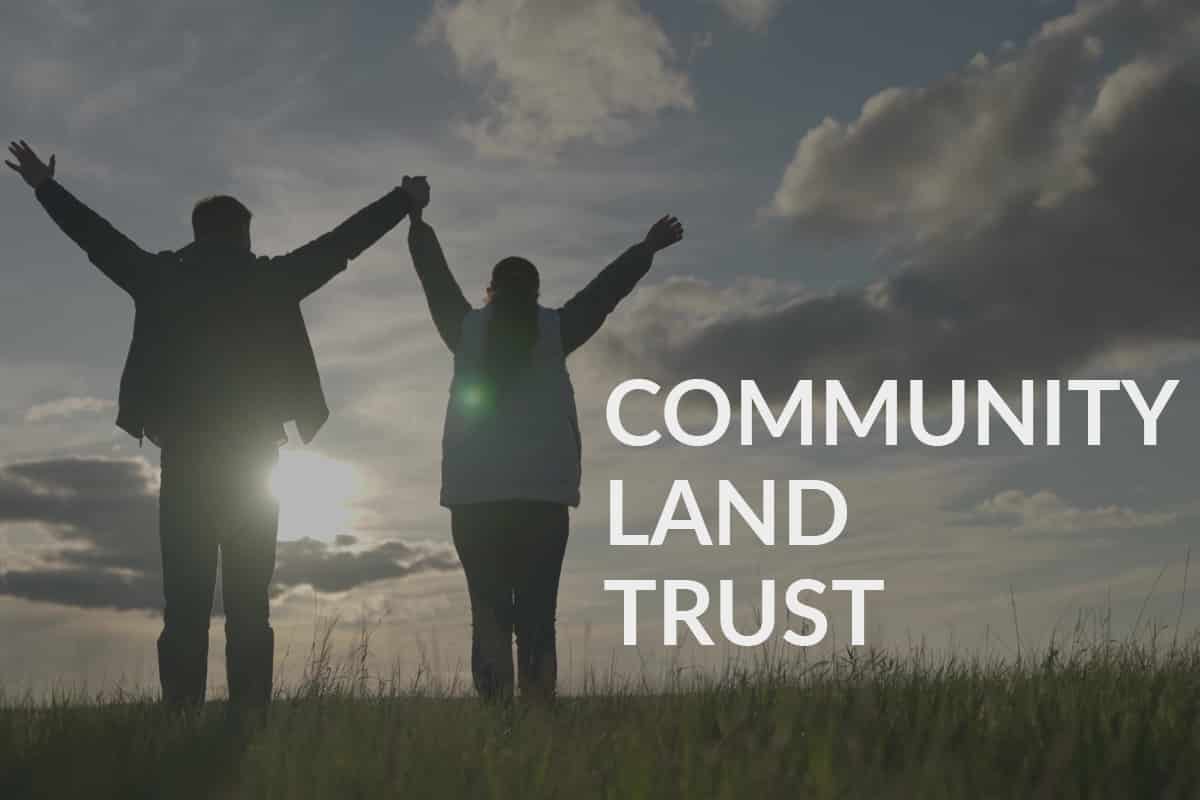What Are Community Land Trusts? Developing Land for Community Benefit

-
by Robert Jones, Founder of Property Investments UK
With two decades in UK property, Rob has been investing in buy-to-let since 2005, and uses property data to develop tools for property market analysis.
Community Land Trusts are becoming more popular as a way to develop and own property for community benefit. Here, we will look at what a Community Land Trust is, what it does, and how to join or form one.
What Exactly is a Community Land Trust?
A Community Land Trust, often known as a CLT for short, is a not-for-profit organisation that exists to own and operate land for the benefit of a local community.
Community land trusts are usually set up by people and organisations who live and work in (or have an interest in) a defined local area such as a village, town or suburb. They are membership organisations that are owned by their members and run democratically.
The Community Land Trust model, as we know it today, was first developed in the USA but has become popular in the UK due to high housing costs and a shortage of affordable accommodation in many areas. There are now over 550 Community Land Trusts in England and Wales, with over 8,000 homes built or planned.

Access our selection of exclusive, high-yielding, off-market property deals and a personal consultant to guide you through your options.
What Do They Do?
Community Land Trusts can do anything that involves owning and operating land for the benefit of a community. Community Land Trusts can own and run community centres, local shops, post offices and even pubs. They can be set up to own playgrounds, playing fields, allotments or nature reserves.
The most popular function of a CLT (at the moment) is to develop and build housing for the benefit of the community. This is known as community-led housing. A CLT will provide affordable housing to rent or buy at less than local open market prices. The prices or rents may be linked to local wages rather than local open market rents or prices.
Community Land Trusts usually act as trustees or stewards for the land or housing. The idea is to ensure that it remains community-led and affordable (on a long-term basis). Properties developed by a CLT are generally subject to what is known as an asset lock so that they do not become part of the commercial property market.

Community-Led Housing
As we have said above, while community land trusts can serve as a framework for all kinds of uses of land, from commercial spaces to parks and playgrounds, they are most often set up for residential homes.
With that in mind, it is worth exploring the related concept of community-led housing.
While community land trusts are not always used in conjunction with community-led home projects, there is a close relationship between the two frameworks.
Community-led housing involves bringing together a local community to solve local housing problems (commonly, the issue being addressed will be a shortage of affordable homes in an area) for which there is no single blueprint to follow, which in many ways, is the whole point of this sort of project: local communities can tailor solutions to the problems they face in ways that can be out of reach to large developers and government bodies.
But that isn't to say that there isn't a common thread: community-led housing projects will often oversee the creation of new homes built from the bottom up but most commonly are set up to bring buildings that have fallen into disrepair back into use.
While the primary goals of community-led housing projects are around diversifying the housing stock of an area and providing much-needed affordable housing solutions to the local community, there is much more to the idea than that. Other benefits to community-led housing can include strengthening communities, mobilising public support for new initiatives, bolstering mutual support for vulnerable community members and providing training and jobs for young people.
How to Join a Community Land Trust
Anyone can join a CLT if they are committed to the aims of the CLT and if, of course, there is one in their area. Members often become shareholders in the CLT, perhaps by buying a share, often at a nominal value such as £1.
Members can then vote for a board of trustees to run the CLT at an annual general meeting or AGM and may also propose themselves for election to the board if they wish to. They can also vote for the policies of the CLT, such as where and what type of homes the CLT will build and who they will be for.
Community Land Trusts are often run on a day-to-day basis by volunteer members. They may also hire members of staff and experts and advisers to help them.
How to Set One Up
Anyone can form a Community Land Trust. They are usually set up by a group of local people who come together to provide affordable accommodation in a particular area. Local councils, charities, organisations and property developers may also be involved in setting up a CLT.
The first step towards forming a Community Land Trust is for interested people to pool their thoughts and ideas. They then put together a steering group to recruit more members and find out if any organisations are interested in supporting them. They then start to work out what their objectives are and put a business plan together.
Once the aims of the new CLT are established, it is time to start looking for a project(s). Then a formal legal body will need to be formed. This could be a Community Interest Company (CIC), a Community Benefit Society, or it could be an Industrial and Provident Society or a company limited by guarantee. However, it is best to take expert advice on the best way of doing this so that it meets the legal definition of a CLT.
Community Land Trusts have a formal legal definition according to Part 2 of the Housing & Regeneration Act 2008.
Some areas have what are known as local enabling hubs that can help with forming a Community Land Trust. Here’s how to find such a hub.
How Community Land Trusts Work
How are Community Land Trusts financed? Members of a CLT do not need to put any of their own money into the CLT to either buy land or develop houses. Community Land Trusts may receive grants from local authorities and the Government under schemes designed to provide support. They may receive donations from benefactors. They may also fund their activities by selling shares or using loans or mortgages.
Where do Community Land Trusts find land from? CLTs may buy plots of land to build their houses or lease them on a long lease. They may buy this land at a discount because it will be used for community-led housing. CLTs may also be gifted land or sold for a nominal amount by a local authority, a charity or a benefactor. Land may be a gift or bought from a housing developer at a low price (perhaps as part of the developer's section 106 affordable housing commitments).
How do Community Land Trusts build houses? Community Land Trusts and CLT members do not usually build any houses themselves. They will usually find an architect to help design development and a developer or builder to construct it.
In some cases, CLTs may partner with housing associations to build and manage the houses.
What types of housing do Community Land Trusts provide? CLTs can offer many forms of affordable housing depending on what they are set up to do. CLTs can provide homes for social rent, affordable rent, homes for shared ownership and shared equity or intermediate housing. CLTs can provide homes for single people, families, older people or anyone else as set down in their objectives.
Housing that is provided by a CLT must be community-led and for community benefit. So, for example, if a property is sold, it must be sold on the same affordable basis that it was bought on, at the same discount on the market price and to the same type of qualifying buyer. Any profits that a CLT makes must be used to further its objectives.
More Information
More information about how CLTs work and how to set one up can be obtained from...
Community Land Trust Network is the national membership body for Community Land Trusts in England and Wales.
Community-Led Homes is a partnership between the Confederation of Co-operative Housing, Locality, the National Community Land Trust Network and UK Cohousing.
